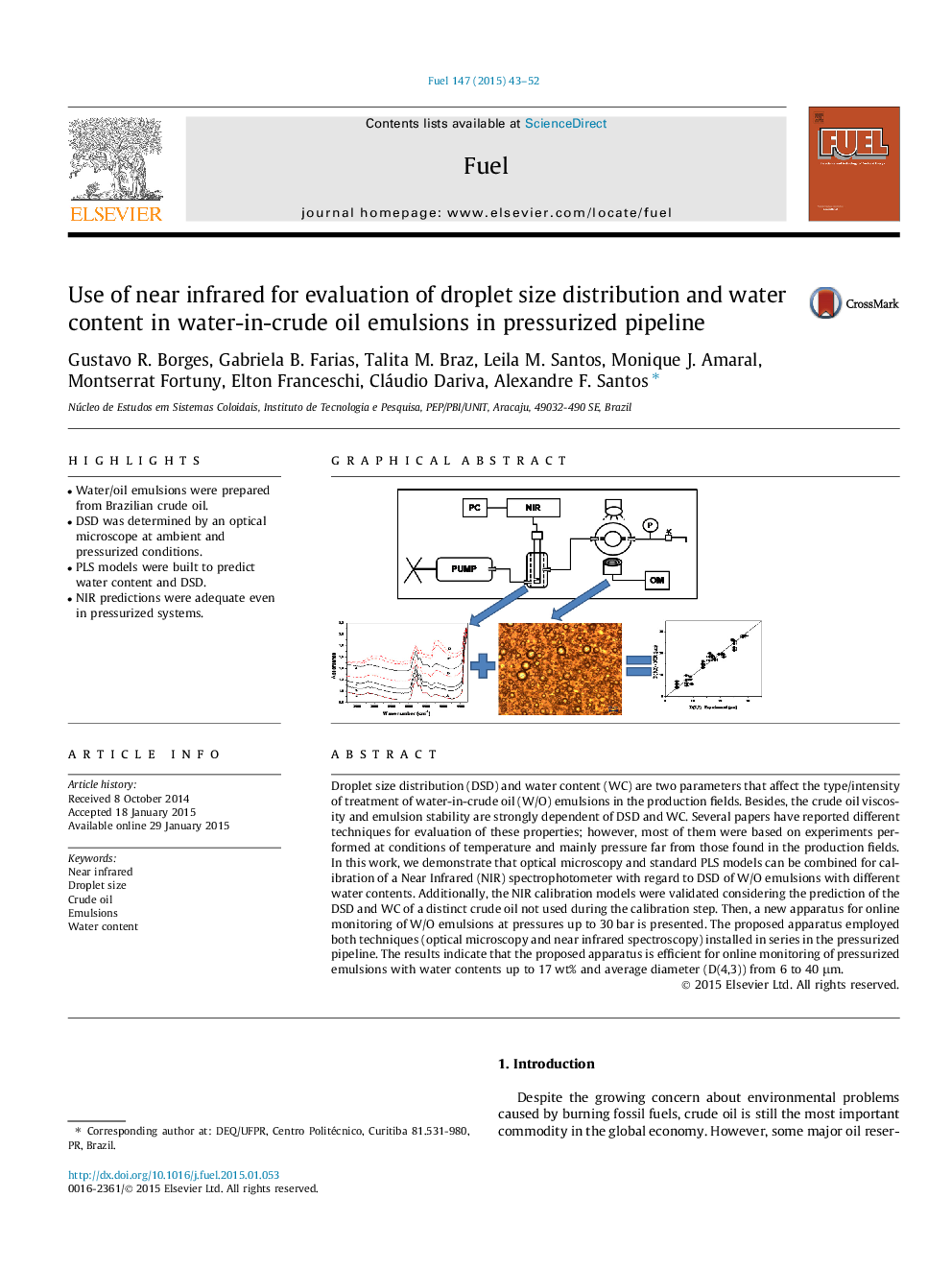| Article ID | Journal | Published Year | Pages | File Type |
|---|---|---|---|---|
| 205941 | Fuel | 2015 | 10 Pages |
•Water/oil emulsions were prepared from Brazilian crude oil.•DSD was determined by an optical microscope at ambient and pressurized conditions.•PLS models were built to predict water content and DSD.•NIR predictions were adequate even in pressurized systems.
Droplet size distribution (DSD) and water content (WC) are two parameters that affect the type/intensity of treatment of water-in-crude oil (W/O) emulsions in the production fields. Besides, the crude oil viscosity and emulsion stability are strongly dependent of DSD and WC. Several papers have reported different techniques for evaluation of these properties; however, most of them were based on experiments performed at conditions of temperature and mainly pressure far from those found in the production fields. In this work, we demonstrate that optical microscopy and standard PLS models can be combined for calibration of a Near Infrared (NIR) spectrophotometer with regard to DSD of W/O emulsions with different water contents. Additionally, the NIR calibration models were validated considering the prediction of the DSD and WC of a distinct crude oil not used during the calibration step. Then, a new apparatus for online monitoring of W/O emulsions at pressures up to 30 bar is presented. The proposed apparatus employed both techniques (optical microscopy and near infrared spectroscopy) installed in series in the pressurized pipeline. The results indicate that the proposed apparatus is efficient for online monitoring of pressurized emulsions with water contents up to 17 wt% and average diameter (D(4,3)) from 6 to 40 μm.
Graphical abstractFigure optionsDownload full-size imageDownload as PowerPoint slide
